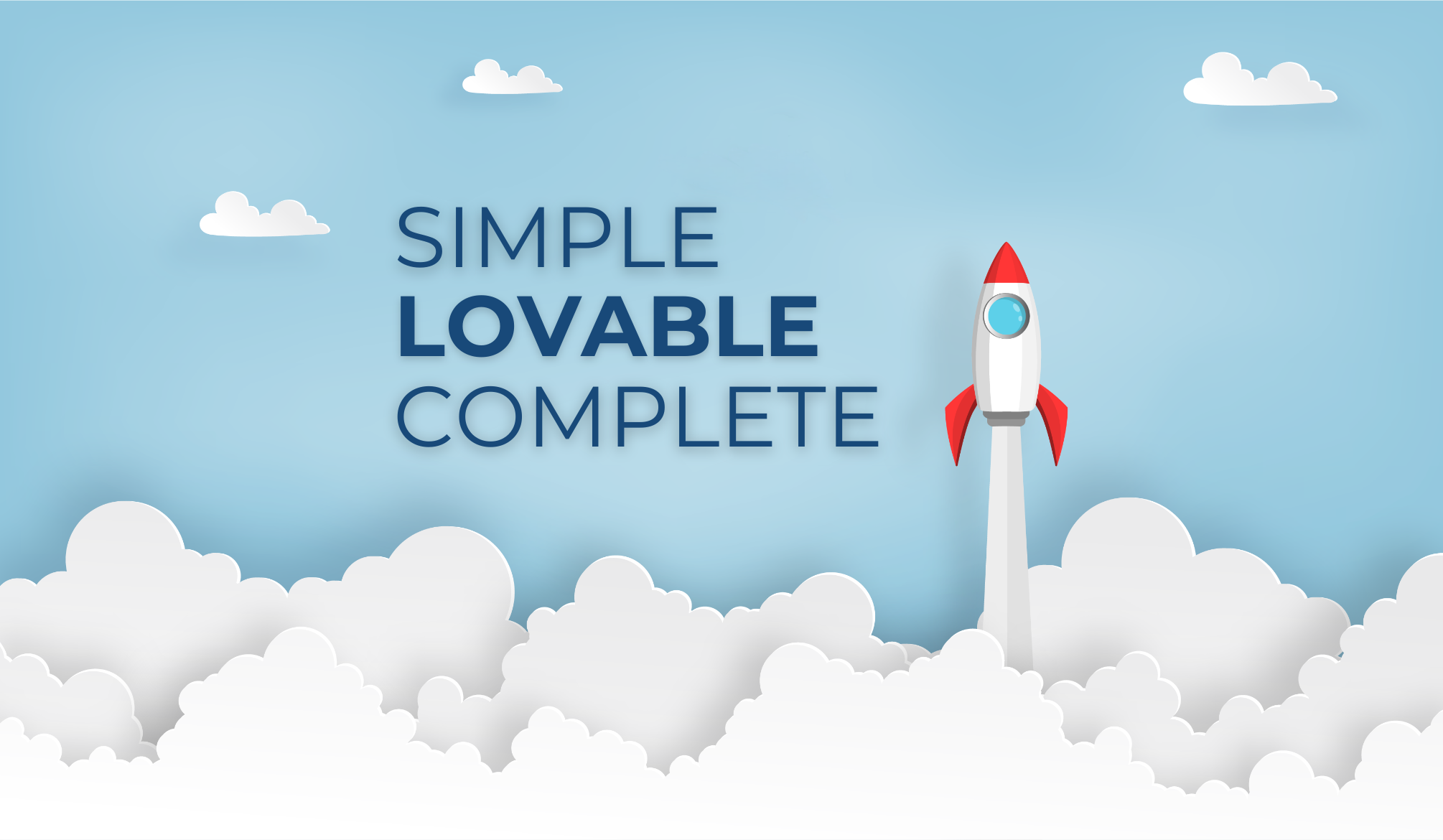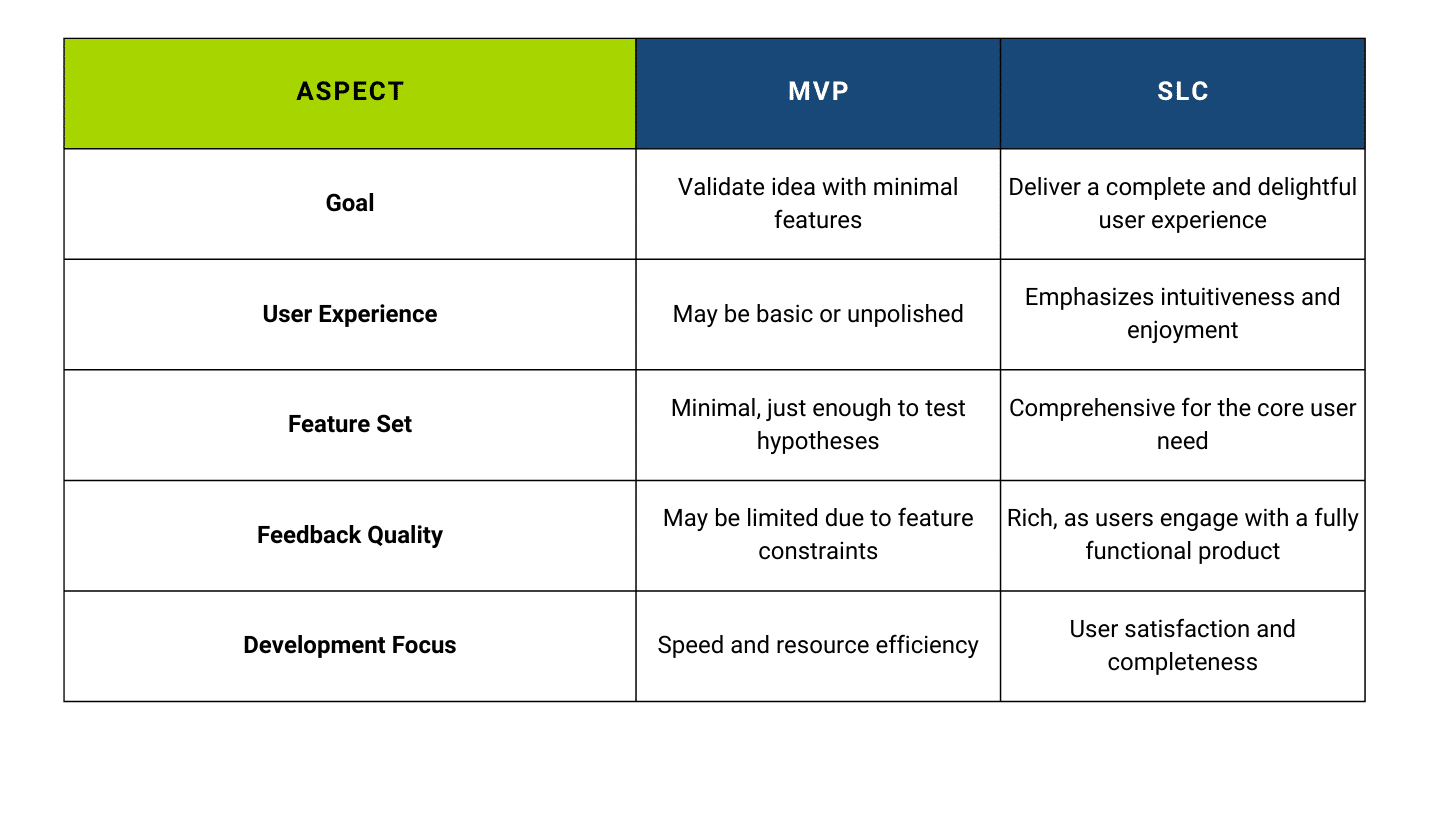
In software development, the Minimum Viable Product (MVP) has long been a favored strategy for launching new products. By focusing on delivering just enough functionality to satisfy early adopters and gather feedback, MVPs aim to validate ideas quickly and cost-effectively. However, this approach isn’t without its drawbacks. Products released as MVPs can sometimes feel incomplete or lack the polish that users expect, potentially impacting user satisfaction and adoption rates.
An alternative perspective gaining traction is the Simple, Lovable, Complete (SLC) framework. Rather than emphasizing minimalism, SLC focuses on delivering a product that is straightforward to use, delightful in experience, and complete in addressing the user’s primary needs from the outset. This approach doesn’t replace MVP but offers another lens through which to consider product launches, especially when user experience and satisfaction are paramount.
In this article, we’ll delve into the SLC framework, examining its principles and how it compares to the traditional MVP approach. We’ll also explore scenarios where SLC might be a more suitable strategy, providing insights for teams aiming to make informed decisions about their product development processes.
Understanding MVP: A Quick Recap
The MVP strategy, rooted in the Lean Startup methodology, advocates for releasing a product with the minimum set of features necessary to validate a concept and gather user feedback. The goal is to learn quickly and iterate based on real-world usage, minimizing time and resource investment before achieving product-market fit.
Advantages of MVP:
-
- Rapid Validation: Quickly test assumptions and hypotheses in the market.
- Resource Efficiency: Conserve development resources by focusing on core functionalities.
- Iterative Learning: Use feedback loops to refine and improve the product over time.
Challenges with MVP:
-
- User Perception: Early versions may feel incomplete or lack polish, potentially deterring users.
- Brand Impact: A subpar initial experience can affect brand reputation and trust.
- Feedback Quality: Limited features might not provide sufficient context for meaningful user feedback.
Shipping an MVP and hoping for the best can feel like showing up to a dinner party with half a casserole. You might get feedback, but it probably won’t be the kind you wanted, even if the casserole is delicious.
Introducing the SLC Framework
The Simple, Lovable, Complete (SLC) framework offers an alternative approach to product development, emphasizing a balance between core functionality, delightful user experience, and completeness. Rather than releasing a bare-bones product, SLC focuses on delivering a version that users find intuitive, delightful, and fully capable of addressing their primary needs.
Core Principles of SLC:
-
- Simple: The product should be easy to understand and use, avoiding unnecessary complexity.
- Lovable: It should provide a delightful user experience that fosters emotional connection and satisfaction.
- Complete: The product must fully address the user’s core problem without requiring immediate additional features or iterations.
An SLC product should feel like a well-packed carry-on. It might not have everything, but it has exactly what you need without making you dig.
Comparing MVP and SLC: Key Differences
While both MVP and SLC aim to bring products to market efficiently, their approaches differ in focus and execution.

Time-to-Market and Budget Considerations
A common perception is that SLC requires more time and budget compared to MVP. While it’s true that SLC may involve a higher initial investment, it can lead to cost savings in the long run by reducing the need for extensive revisions and rework.
MVP:
-
- Time-to-Market: Faster
- Initial Budget: Lower
- Potential Risks: Higher likelihood of rework, potential negative user perception
SLC:
-
- Time-to-Market: Moderate
- Initial Budget: Higher
- Potential Benefits: Reduced rework, stronger user adoption, enhanced brand reputation
Launching with too little polish is like opening a hotel where the beds haven’t arrived yet. Sure, it’s technically open, but no one’s staying.
An SLC product lands like a perfectly brewed cup of coffee. Simple, satisfying, and exactly what your users needed to start their day right.
When to Consider the SLC Approach
While MVPs are suitable for rapid testing and iteration, the SLC framework may be more appropriate in scenarios where:
-
- User Experience is Critical: Products where first impressions significantly impact user adoption and retention.
- High Competition: Markets where users have ample alternatives and expect polished experiences.
- Brand Reputation Matters: Companies aiming to maintain a strong brand image from the outset.
- Complex User Needs: Solutions addressing multifaceted problems that require a comprehensive approach.
Implementing the SLC Framework: Practical Steps
To adopt the SLC approach, consider the following steps:
-
- Identify Core User Needs: Conduct thorough research to understand the primary problems your product should solve.
- Design for Simplicity: Focus on intuitive interfaces and straightforward user flows to minimize friction.
- Incorporate Delightful Elements: Add features that surprise and please users, fostering emotional connections.
- Ensure Completeness: Before launch, verify that the product fully addresses the core user needs without significant gaps.
- Gather Feedback and Iterate: Post-launch, collect user feedback to inform future enhancements, maintaining the SLC principles.
Conclusion
The choice between MVP and SLC approaches hinges on your product goals, user expectations, and market dynamics. While MVPs offer a path to rapid validation, the SLC framework provides an avenue to deliver products that users find immediately valuable and enjoyable. By considering the principles of simplicity, lovability, and completeness, teams can craft experiences that foster user satisfaction and loyalty from the start.
Ultimately, both MVP and SLC are frameworks that can be tailored to fit a variety of product modalities and business contexts. There’s no universal solution. Choosing the right approach depends on the unique needs, goals, and expectations of your users and market.
FAQs
Q1: How does SLC differ from MVP? While MVP focuses on launching a product with minimal features to test assumptions, SLC emphasizes delivering a product that is simple, delightful, and complete from the start, aiming for immediate user satisfaction.
Q2: Is the SLC approach more time-consuming than MVP? SLC may require more upfront investment in design and development to ensure completeness and user delight. However, it can save time in the long run by reducing the need for extensive post-launch revisions.
Q3: Can SLC be applied to internal tools or only customer-facing products? SLC principles can enhance both internal and external products by focusing on user satisfaction and completeness, leading to higher adoption and efficiency.
Q4: How do I know if my product is “lovable”? User feedback, high engagement rates, and positive reviews can indicate that your product resonates emotionally with users.
Q5: What if I already launched an MVP? Can I transition to SLC? Absolutely. You can iterate on your existing product by enhancing its simplicity, adding delightful features, and ensuring it fully addresses user needs to align with the SLC framework.


